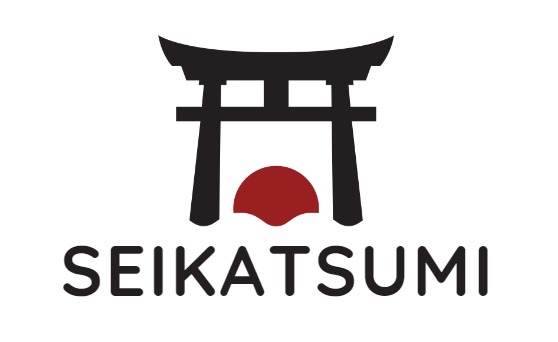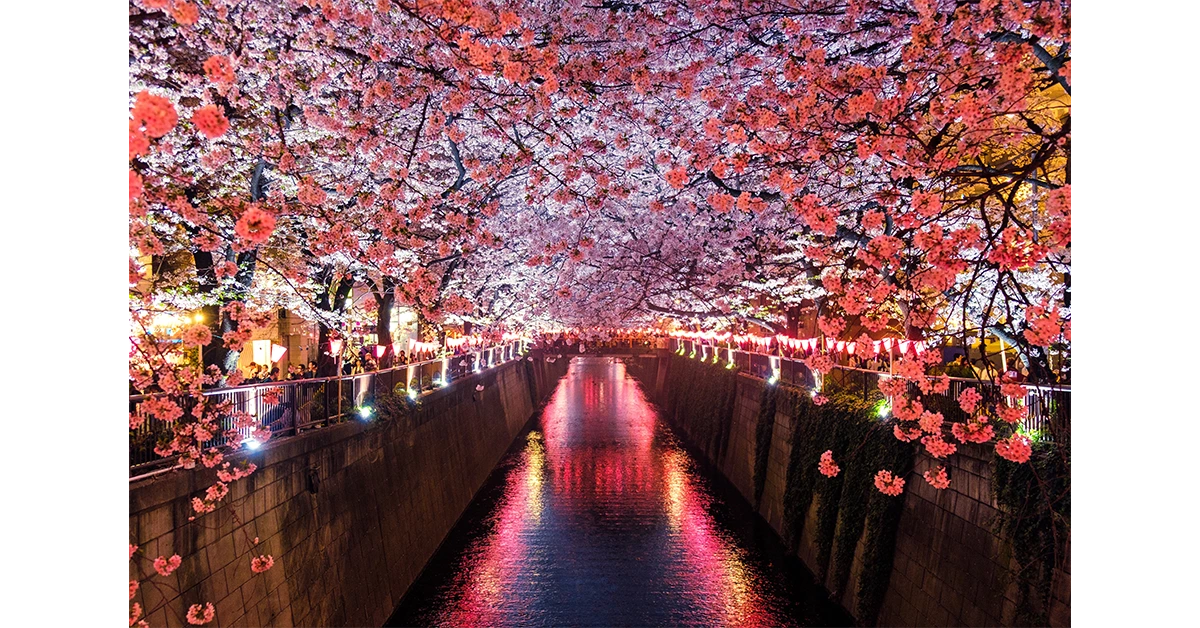Are you captivated by the simplicity of fashion and daily life, drawn to the allure of Japan? If you appreciate the art of aesthetics and seek inspiration from the Japanese way, join us on a journey where elegance meets everyday existence. Ready to explore the enchanting world of Japanese Aesthetic?
Japanese aesthetic encompasses ancient ideals integral to Japanese culture, including wabi, sabi, and yūgen. These ideals offer a unique perspective, emphasizing simplicity, imperfection, and the transience of things.
Beyond art and design, the Japanese aesthetic influences various aspects of life, from architecture to gardening and food. It’s a lifestyle valuing nature’s beauty, the passage of time, and the imperfection of things. It’s not about perfection but finding beauty in imperfection, embracing the natural and the simple, and living in harmony with the world.
In this article, we’ll delve into the history of Japanese aesthetic and its impact on culture and art. Explore the various ideals shaping Japanese aesthetic and discover how they manifest in different forms of art and design. Join us on this journey of discovering the beauty and simplicity of Japanese aesthetic.
Origins of Japanese Aesthetic
When we think of Japanese culture, one of the first things that come to mind is its unique aesthetic. From traditional art to modern design, Japanese aesthetic has left an indelible mark on the world. But where did it all begin? In this section, we’ll explore the origins of Japanese aesthetic and the cultural and philosophical influences that shaped it.
Influence of Zen Buddhism

One of the most significant influences on Japanese aesthetic is Zen Buddhism. Zen Buddhism arrived in Japan from China in the 12th century and had a profound impact on Japanese culture. Zen emphasizes the importance of mindfulness, simplicity, and the beauty of imperfection. These values are reflected in many aspects of Japanese aesthetic, from the minimalist design of traditional homes to the art of ikebana (flower arrangement).
Zen Buddhism also played a role in the development of Japanese tea ceremony, or chanoyu. The tea ceremony is a ritualized practice that emphasizes harmony, respect, and tranquility. The simple yet elegant aesthetics of the tea room and the utensils used in the ceremony reflect the Zen values of mindfulness and simplicity.
Impact of Shintoism

Another significant influence on Japanese aesthetic is Shintoism. Shinto is the indigenous religion of Japan and emphasizes the connection between humans and nature. This connection is reflected in many aspects of Japanese aesthetic, from the use of natural materials in traditional architecture to the appreciation of the changing seasons in haiku poetry.
Shinto also played a role in the development of Japanese garden design. Japanese gardens are designed to create a harmonious relationship between nature and humans. They often feature elements such as rocks, water, and plants arranged in a way that reflects the natural landscape. The aesthetic of Japanese gardens reflects the Shinto belief in the importance of harmony between humans and nature.
Key Concepts of Japanese Aesthetic

If you are interested in Japanese culture, you have probably heard about the concept of Japanese aesthetics. Japanese aesthetic refers to the set of ancient ideals that underpin much of Japanese cultural and aesthetic norms on what is considered tasteful or beautiful. In this section, we will explore some of the key concepts of Japanese aesthetic.
Wabi-Sabi: Beauty in Imperfection

Wabi-Sabi is a fundamental concept of Japanese culture that celebrates the beauty found in imperfection, simplicity, and the transience of life. It is often associated with the traditional Japanese tea ceremony, where the imperfect tea bowls are appreciated for their unique beauty. Wabi-Sabi is not just about accepting imperfection but also finding beauty in it. It is about embracing the natural cycle of growth, decay, and death that is inherent in all things.
Mono No Aware: The Transience of Things

Mono No Aware is another essential concept of Japanese aesthetic that refers to the awareness of the transience of things. It is a deep sense of melancholy that arises from the impermanence of life. Mono No Aware is often associated with the beauty of cherry blossoms, which bloom for only a short period before they fall to the ground. It is about appreciating the beauty of things that are fleeting and understanding that nothing lasts forever.
Yugen: The Mystery and Depth of the Invisible

Yugen is a concept of Japanese aesthetic that refers to the mystery and depth of the invisible. It is about finding beauty in things that are not immediately apparent. Yugen is often associated with the beauty of nature, where the subtle changes in light, shadow, and color create a sense of mystery and depth. It is about appreciating the beauty of things that are hidden and understanding that there is more to life than what meets the eye.
Iki: Embracing Effortless Elegance in Japanese Aesthetics

Iki is a concept of Japanese aesthetic that refers to the aesthetic of simplicity, sophistication, and understated elegance. It is about finding beauty in things that are refined and elegant. Iki is often associated with the beauty of traditional Japanese crafts, such as ceramics, textiles, and lacquerware. It is about appreciating the beauty of things that are simple yet sophisticated.
Shibui: The Art of Subtle Beauty in Japanese Aesthetics

Shibui is a concept of Japanese aesthetic that refers to the aesthetic of simplicity, subtlety, and restraint. It is about finding beauty in things that are understated and refined. Shibui is often associated with the beauty of traditional Japanese architecture, where the use of natural materials and simple forms create a sense of harmony and balance. It is about appreciating the beauty of things that are simple yet refined.
Japanese aesthetic is a set of ancient ideals that underpin much of Japanese cultural and aesthetic norms on what is considered tasteful or beautiful. Wabi-Sabi, Mono No Aware, Yugen, Iki, and Shibui are some of the key concepts of Japanese aesthetic that help us appreciate the beauty of imperfection, transience, mystery, simplicity, and subtlety. In essence, these concepts form the foundation of a unique worldview that celebrates the elegance found in life’s imperfections and the profound beauty within simplicity and subtlety.
Influence on Arts
Japanese aesthetics have had a profound impact on art and design around the world. In this section, we will explore some of the most notable ways Japanese aesthetic has influenced the arts.
Haiku Poetry: Brevity and Depth
Haiku is a form of Japanese poetry that has captivated people around the world with its brevity and depth. Haiku typically consists of three lines, with a total of 17 syllables. The first and third lines each have five syllables, while the second line has seven syllables. This strict structure forces the poet to carefully choose their words, resulting in a poem that is both concise and powerful.
Ikebana: The Art of Flower Arrangement

Ikebana, the Japanese art of flower arrangement, is another example of how Japanese aesthetics have influenced the arts. Unlike traditional Western flower arrangements, which focus on creating a symmetrical, balanced composition, ikebana emphasizes asymmetry and negative space. The goal of ikebana is to create a harmonious arrangement that highlights the beauty of each individual flower.
Ukiyo-e: Woodblock Prints from the Edo Period
Ukiyo-e is a genre of Japanese art that flourished during the Edo period (1603-1868). Ukiyo-e prints were created using a woodblock printing technique, which allowed for mass production of images. These prints often depicted scenes from everyday life, such as landscapes, cityscapes, and portraits of famous actors and courtesans. Ukiyo-e prints were highly influential on Western art, particularly on the Impressionists.
Japanese aesthetic has had a profound impact on the arts, inspiring artists and designers around the world to create works that are both beautiful and meaningful. From haiku poetry to ikebana to ukiyo-e prints, Japanese aesthetic continues to captivate and inspire us.
Influence on Architecture
Japanese aesthetic has had a profound influence on architecture around the world. From traditional Japanese architecture to modern design, elements of Japanese style have been incorporated into buildings and homes worldwide. In this section, we will explore some of the ways in which Japanese aesthetic has influenced architecture.
Zen Gardens: Harmony between Nature and Art

Zen gardens, also known as karesansui, are an important element of Japanese aesthetic. These gardens are designed to create a sense of harmony between nature and art. They typically feature carefully arranged rocks, sand, and gravel, with no living plants. The result is a serene and peaceful environment that encourages contemplation and meditation.
Incorporating elements of a Zen garden into architecture can create a similar sense of harmony and balance. For example, a courtyard with a carefully arranged rock garden can provide a peaceful escape from the hustle and bustle of the city.
Traditional Japanese Architecture: Shoji, Tatami, and More

Traditional Japanese architecture is another important influence on modern design. Elements such as shoji screens, tatami mats, and sliding doors have been incorporated into homes and buildings around the world.
Shoji screens are a type of sliding door made from translucent paper and wood frames. They provide privacy while still allowing light to filter through, creating a soft, diffused light that is characteristic of Japanese interiors.
Tatami mats are a type of flooring made from woven rush grass. They are soft and comfortable to walk on, and provide a natural, organic feel to a room. Tatami mats are often used in traditional Japanese homes, but have also been incorporated into modern design.
Modern Japanese Design: Minimalism and Functionality

Modern Japanese design is known for its minimalism and functionality. Clean lines, simple shapes, and a focus on functionality are hallmarks of this style. This aesthetic has been incorporated into architecture around the world, with buildings that are both beautiful and functional.
For example, the Tokyo International Forum is a modern building that incorporates elements of Japanese design. The building features clean lines and a minimalist aesthetic, with a focus on functionality. The result is a beautiful building that is both functional and visually appealing.
Influence on Fashion
Japanese aesthetic has had a significant impact on the fashion world. From traditional garments to contemporary fashion, Japan has influenced the industry in unique and innovative ways. In this section, we will explore how Japanese aesthetic has influenced fashion.
Kimono

Kimono is a traditional Japanese garment that has inspired fashion designers for centuries. Its elegant and timeless design has been incorporated into modern fashion, making it a staple in the industry. Kimono’s influence can be seen in various fashion pieces, such as dresses, blouses, and jackets. The use of kimono fabric and patterns in modern fashion has created a fusion of traditional and contemporary styles.
Contemporary Fashion

Contemporary Japanese fashion has become synonymous with innovation and creativity. The Japanese fashion industry has produced some of the most avant-garde and cutting-edge designs that have influenced global fashion trends. Japanese designers are known for their unconventional approach to fashion, incorporating unique fabrics, textures, and shapes. Their designs are often inspired by traditional Japanese culture, such as samurai armor, geisha, and kabuki theater.
Japanese street fashion has also gained international recognition for its bold and daring styles. Harajuku fashion, for example, is a style that originated in the Harajuku district of Tokyo. It is characterized by its bright colors, eclectic mix of clothing, and bold accessories. Harajuku fashion has influenced fashion trends worldwide, and its influence can be seen in various fashion pieces, such as streetwear and high fashion.
Japanese Aesthetic in the Digital Age
As technology advances, so does the world of Japanese aesthetics. The traditional ideals of wabi-sabi, yūgen, and miyabi have been reinterpreted and adapted to fit the digital age. In this section, we will explore how Japanese aesthetic has evolved in the digital age, with a focus on anime and manga, as well as video games.
Anime and Manga
Anime and manga are two of the most popular forms of Japanese media, and they are also known for their unique artistic style. The use of vibrant colors, intricate details, and exaggerated features all contribute to the overall aesthetic of anime and manga.
One of the most notable aspects of Japanese aesthetic in anime and manga is the concept of kawaii, or cuteness. This can be seen in the large eyes, small noses, and round faces of many anime and manga characters. This aesthetic has become so popular that it has even influenced fashion and design outside of Japan.
Video Games

Video games have also played a significant role in the evolution of Japanese aesthetic. Many Japanese video games feature stunning visuals and intricate details, which contribute to the overall immersive experience.
One example of this is the game Okami, which draws inspiration from traditional Japanese art and mythology. The game’s vibrant colors and intricate designs create a beautiful and immersive world for players to explore.
Another example is the game Persona 5, which features a unique blend of modern and traditional Japanese aesthetic. The game’s use of bold colors, intricate patterns, and stylish character designs all contribute to its overall aesthetic.
In conclusion, Japanese aesthetic has evolved in the digital age to include new forms of media such as anime, manga, and video games. These new mediums have allowed for a reinterpretation and adaptation of traditional Japanese aesthetic ideals, resulting in stunning and immersive experiences for audiences around the world.
My Opinion on japanese aesthetic
Japanese Aesthetic, deeply influenced by the Zen Buddhist philosophy, captivates me with its profound approach to life. The seamless integration of Zen principles into art, architecture, and daily life in Japan is truly fascinating.
The emphasis on impermanence, simplicity, and mindfulness in Japanese Aesthetic aligns seamlessly with the Zen philosophy. The idea of finding beauty in imperfection, known as Wabi-Sabi, speaks to a deeper understanding of the transient nature of all things. It encourages a mindful appreciation of the present moment, a concept that resonates powerfully with Zen teachings.
In art and architecture, this aesthetic is not merely a visual style but a reflection of a philosophical outlook. The deliberate simplicity and functionality in traditional Japanese design, as well as the tranquility exuded by Zen gardens, convey a harmonious coexistence with nature and an acknowledgment of the fleeting nature of existence.
Moreover, this aesthetic transcends artistic expressions and permeates everyday life in Japan. From the meticulous rituals of the tea ceremony to the minimalistic design of living spaces, there’s a consistent thread of mindfulness and intentionality. It’s a lifestyle that encourages one to appreciate the beauty in mundane moments and find solace in the simplicity of the everyday.
In essence, Japanese Aesthetic, deeply rooted in Zen philosophy, is more than a visual delight; it’s a way of life that beckons us to embrace impermanence, find beauty in simplicity, and cultivate a mindful presence in every moment. This integration of philosophy into aesthetics and daily practices is, for me, a source of continual inspiration and a reminder of the profound beauty that exists in the art of living.
Frequently Asked Questions
What defines Japanese Aesthetic?
Japanese Aesthetic is a collection of ancient ideals deeply rooted in Japanese culture, influencing various aspects of life, art, and design. It encompasses concepts such as Wabi-Sabi, Mono No Aware, Yugen, Iki, and Shibui, emphasizing the beauty of imperfection, transience, mystery, simplicity, and subtlety.
How does Japanese Aesthetic extend beyond art and design?
Japanese Aesthetic is not confined to the realm of art. It extends to diverse facets of life, including architecture, gardening, and even culinary arts. This cultural perspective values the beauty of nature, the passage of time, and the intrinsic imperfections found in all things.
What role does Japanese Aesthetic play in modern society?
In modern society, Japanese Aesthetic continues to influence and inspire. Its impact is visible in contemporary design, fashion, and lifestyle choices. Many people around the world are drawn to the simplicity, elegance, and mindful appreciation of the present moment that Japanese Aesthetic encourages.
If you liked this blog post about: Japanese Aesthetic, don’t forget to leave us a comment down below! Tell us what particularly fascinates you about japanese aesthetics!


